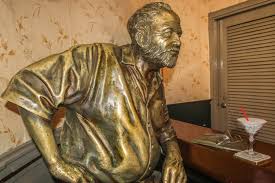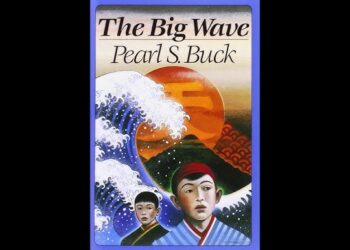Introduction To The Novel
Summary Old Man At The Bridge By Ernest Hemingway “Old Man at the Bridge” is a short story by Ernest Hemingway, first published in 1938. This poignant narrative encapsulates Hemingway’s minimalist style and his profound exploration of human emotions, particularly in the face of war. The story is set during the Spanish Civil War and revolves around an encounter between a soldier and an old man, revealing themes of loss, displacement, and the indifference of war.
Setting the Scene
The story opens with a description of a bridge on a dusty road in Spain during a time of war. The setting is marked by a sense of urgency and turmoil as troops are on the move, and the threat of danger looms. The atmosphere is tense, and the backdrop of conflict serves as a stark contrast to the old man’s quiet, resigned demeanor.
The soldier is tasked with observing the bridge and reporting on the movements of the enemy. As he goes about his duty, he comes across an old man sitting at the bridge. This encounter sets the stage for a poignant exploration of human experiences in times of war.
READ MORE
The Old Man
The old man, whose name is never revealed, is characterized by his frailty and vulnerability. He is described as having a “dirty, torn” appearance, highlighting his displacement and the harsh realities of war. Despite his age and physical weakness, there is a sense of dignity about him, which becomes more evident as the story unfolds.
As the soldier approaches him, the old man expresses his concern about the animals he left behind. He had been caring for them—two goats, a cat, and a bird—before the war forced him to flee. This attachment to the animals reveals his nurturing nature and adds depth to his character. The old man’s anxiety about their fate contrasts sharply with the soldier’s more detached perspective on the war.

The Conversation
The conversation between the soldier and the old man is central to the narrative. The soldier listens patiently as the old man recounts his situation. He describes how he had to leave the animals behind and expresses his deep concern for their safety. The old man’s worries are not just about physical survival; they also reflect his emotional attachment to the creatures he cares for.
Hemingway’s use of dialogue is minimal yet effective, illustrating the old man’s desperation and the soldier’s composure. The old man reveals his love for his animals, referring to them with affection and concern. This emotional connection highlights the theme of loss—both the loss of his animals and the loss of a peaceful life.
Themes of Displacement and Loss
The primary theme of “Old Man at the Bridge” is the sense of displacement caused by war. The old man’s forced departure from his home and his beloved animals symbolize the broader dislocation experienced by countless individuals during times of conflict. Hemingway captures the essence of this displacement through the old man’s character, who represents the innocent victims of war—those who suffer the consequences of decisions made by others.
Loss permeates the narrative. The old man’s anxiety about his animals reflects a deeper sense of loss—of safety, stability, and a sense of belonging. He laments leaving them behind, illustrating how war not only uproots individuals physically but also emotionally. The old man’s life has been stripped of its normalcy, and his fears resonate with anyone who has experienced similar losses.
READ MORE
The Soldier’s Perspective
As the conversation unfolds, the soldier remains composed, listening to the old man’s concerns. He represents a more pragmatic view of the war, focused on duty and survival. While he empathizes with the old man, he is also aware of the harsh realities of the situation. The soldier’s character highlights the disconnect between those who are directly affected by war and those who observe it from a distance.
Hemingway’s portrayal of the soldier adds complexity to the narrative. While he exhibits a level of empathy, he is ultimately bound by the responsibilities of war. His internal conflict becomes apparent as he grapples with the old man’s emotional turmoil. The soldier recognizes the old man’s humanity, yet he is also conscious of the urgency of the situation. This duality emphasizes the moral ambiguity often present in wartime encounters.
Symbolism and Imagery
Hemingway employs rich symbolism and imagery throughout “Old Man at the Bridge.” The bridge itself serves as a metaphor for the divide between safety and danger, the past and the present. It represents a liminal space, where the old man’s past life is juxtaposed against the uncertainty of his future.
The old man’s animals also carry symbolic weight. They represent the remnants of his former life, the connections that provide him with a sense of purpose and belonging. Their fate mirrors the old man’s own precarious situation, illustrating the broader theme of survival amidst chaos.
Hemingway’s use of nature further enhances the story’s emotional resonance. The dusty road, the serene landscape, and the looming presence of war create a stark contrast between the beauty of the natural world and the horrors of human conflict. This juxtaposition deepens the reader’s understanding of the old man’s plight, highlighting the fragility of life in the face of war.
The Climax and Resolution
As the story progresses, the urgency of the soldier’s duties becomes more pronounced. He must leave the old man behind to return to his post, a decision that weighs heavily on him. The old man’s continued expressions of concern for his animals create a sense of tension and sorrow.
The climax of the story arrives when the soldier must part ways with the old man. The final moments are charged with emotion as the soldier grapples with the reality of leaving someone so vulnerable in a world torn apart by war. The old man’s fate remains uncertain, leaving readers with a haunting sense of ambiguity.
The resolution of the story underscores the tragic nature of war. The old man sits helplessly at the bridge, embodying the countless individuals who are left behind, forgotten amidst the chaos. The soldier’s departure serves as a poignant reminder of the indifference of war and its impact on innocent lives.
READ MORE
Themes of Indifference and Humanity
Another significant theme in “Old Man at the Bridge” is the indifference of war. The old man’s plight is representative of the many innocents affected by conflict, yet their suffering often goes unnoticed. Hemingway critiques the apathy that can arise in times of war, as individuals become so absorbed in their own struggles that they overlook the humanity of others.
The story also raises questions about moral responsibility. The soldier’s decision to leave the old man behind reflects the difficult choices faced by individuals in wartime. While he may not have the power to change the circumstances of the old man, his empathy illustrates a recognition of shared humanity amidst the chaos of conflict.

Conclusion
“Old Man at the Bridge” is a poignant exploration of war’s impact on the human spirit. Through the encounter between the soldier and the old man, Hemingway masterfully captures themes of displacement, loss, and the indifference of conflict. The story serves as a powerful reminder of the fragility of life and the enduring human connections that can persist even in the face of adversity.
Hemingway’s minimalist style, combined with rich symbolism and imagery, allows readers to engage deeply with the emotional landscape of the characters. The old man’s quiet dignity and the soldier’s internal conflict create a narrative that lingers in the mind long after the final sentence, urging readers to reflect on the complexities of war and the human experience.
FAQ
1. What is the main theme of “Old Man at the Bridge”?
The main theme is the impact of war on innocent lives, particularly through the lens of displacement and loss. The story highlights the emotional turmoil faced by individuals caught in conflict and the indifference that often accompanies war.
2. Who is the protagonist in the story?
The story features two main characters: the old man, who represents the vulnerable victims of war, and the soldier, who embodies the more pragmatic and detached perspective of someone involved in the conflict. Both characters are essential to the narrative, illustrating different facets of the human experience during wartime.
3. What does the bridge symbolize in the story?
The bridge symbolizes the divide between safety and danger, the past and the present. It serves as a liminal space where the old man’s past life is contrasted with the uncertainty of his future, emphasizing the themes of displacement and loss.
4. How does Hemingway depict the old man’s character?
The old man is depicted as frail and vulnerable yet dignified. His deep concern for the animals he left behind reveals his nurturing nature and emotional attachment to his former life, highlighting the impact of war on innocent lives.
READ MORE

















